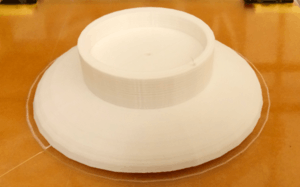Starting with 3D Printing
So I finally tried my hand at 3D printing. Obviously I did not buy at 3D printer. These are either quite expensive or you need to assemble them yourself, which I don't think is in my capacity level.
To get started, you first need a 3D model to print. There are several 3D models available in Thingieverse, however I actually wanted to make my own model. After all, that is the whole point of 3D printing. Custom made parts/objects that can be printed as needed.
To create a 3D model you need some 3D modelling software. For my very first model I opted for TinkerCAD. This is software that runs on the cloud that lets you create your own 3D models. This is particularly interesting because you don't need to install anything on your computer and it would essentially run on anything where a web browser runs.
For a web based application, it is quite responsive and feature-full. You can use (like me) a facebook account to sign-in.
Models can then be downloaded as an ".stl" file (the format used by 3D printers) or send directly to 3D printing service such as 3D Hubs.
3D Hubs, is an online 3D Printing service which facilitates transactions betwen 3D Printer owners (Hubs) and people who want to make 3D prints. Printer owners can join the platform to offer 3D printing services while customers can locate printer owners to get their 3D models printed nearby.
So what I did myself is design a soap dish. The one we had in our shower was glass which fell and broke. I tried looking for a replacement in several hardware stores but came up empty. So, this was a perfect use case for 3D printing.
This was the end result:

Some learning points for this:
- While support material can be used to create complex shapes, the results is not as smooth as I would hope for.
- The soap dish was a very thigh fit in the holder in the shower. This is good, because you can make a very precision part, it also means that accurate measurements (in some cases less than 1 millimeter) are very important.
So, allthough TinkerCAD is quite usable, it is very much an entry level tool. I have since switched to using Art of Illusion which is harder to use, but allows for larger, more complex models. Also, it allows to create shapes by specifying coordinates and sizes by typing a floating point value. This is important because you can get very accurate measurements that way (as opposed to dragging shapes with the mouse, which can't do that accurately).